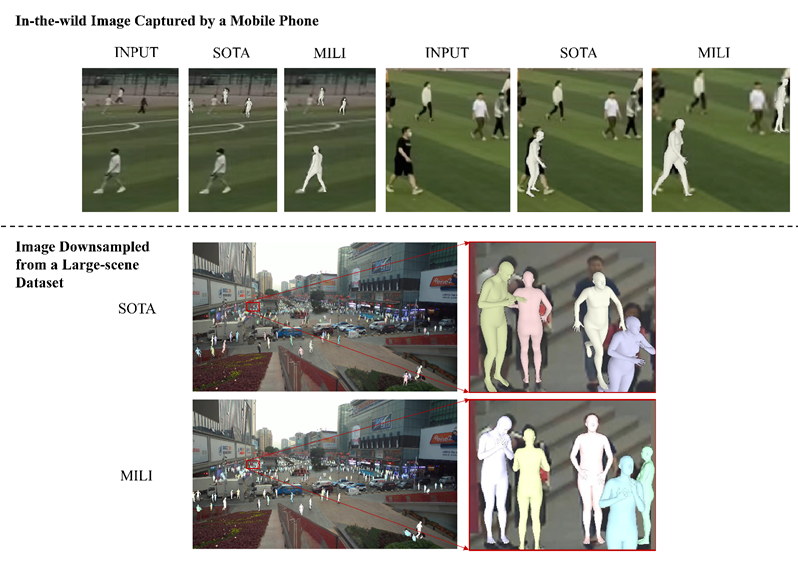Estimation of multi-person 3D poses and shapes from a low-resolution image
Published 20 April, 2023
Accurately estimating 3D poses and body shapes from a single image is critical for several applications, such as behavior analysis and security alerts. Unfortunately, many existing multi-person reconstruction methods need the people present to be clearly visible in the photo to supply enough information. This becomes a problem when cameras have limited resolutions and the field of view is increased to capture individuals in distant areas, resulting in low-resolution images that provide little information.
To address that limitation, a research team from Tianjin University and Cardiff University attempted to reconcile the conflict between image resolution and estimation accuracy. As reported in the KeAi journal Fundamental Research, the team proposed an end-to-end multi-task machine learning framework known as MILI (multi-person inference from a low-resolution image) that enables accurate multi-person 3D pose and shape representation from a low-resolution image.
Further, to tackle the occlusion issue in multi-person scenes, the researchers devised an occlusion-aware mask prediction network for estimating the mask of each person's mesh during regression. Pair-wise images with high- and low-resolution were also used for training.
"In both small-scale and large-scale scenes, MILI outperformed the state-of-the-art methods both quantitatively and qualitatively," said Kun Li, lead author of the study. “Different from the existing work, MILI, as an end-to-end network, encourages the multi-person reconstruction even from low-resolution images and significantly improves the robustness to occlusions with the occlusion-aware mask prediction network by refining the detection stage with segmentation.”
The code is available at http://cic.tju.edu.cn/faculty/likun/projects/MILI.
"Reconstruction of 3D poses and shapes for the individuals in a surveillance scene will allow for better recognition of actions/activities, including the interaction between people, modeling crowd behavior for simulations and security monitoring, and better tracking of individuals over time," concluded Li.
Image:

CAPTION: Using a low-resolution image captured by a mobile phone or downsampled from a large-scene dataset, the new method MILI (multi-person inference from a low-resolution image) can achieve more accurate multi-person reconstruction compared with a state-of-the-art (SOTA) method.
CREDIT: The authors
Contact author name, affiliation, email address:
- Kun Li, Tianjin University, lik@tju.edu.cn
- Jingyu Yang, Tianjin University, yjy@tju.edu.cn
Kun Li, Yunke Liu, Yu-Kun Lai, Jingyu Yang, “MILI: Multi-person Inference from a Low-resolution Image”, Fundamental Research, 2023. ISSN 2667-3258, https://doi.org/10.1016/j.fmre.2023.02.006

